October
2011
Black
Cats Lynx
Miles
Master III
|
October
2011 |
![]()
![]() Selected
WW2 70th Anniversaries this month:
Selected
WW2 70th Anniversaries this month:
The
period from September 1941 to early 1942 marked one of the lowest
points in the war for the Allies. In Russia, the Wehrmacht continued
its inexorable progress toward Moscow, with the capture of Kiev and
siege of Leningrad. With Britain struggling against the U-Boats in
the North Atlantic, the focus of the war for the Western Allies
remains in the Mediterranean and North Africa, where the Allies
struggle against renewed German and Italian offensives that threaten
Egypt and the Suez canal. However, despite the considerable efforts
of the German and Italian Air and sea forces, the beseiged and
battered island of Malta still remains a vital thorn in Rommel's
fragile supply lines to Africa from Sicily.
2 Oct 1941 - Operation Typhoon - German forces begin their all-out attack on Moscow. Hero of the Soviet Union, General Zhukov assumes command of the defences. RAF raids on Berlin, the Ruhr and Cologne suffer heavy losses.
12 Oct - A convoy led by HMS ARK ROYAL delivers a squadron of RAF Hurricane fighter planes to Malta, defying the Axis air and sea blockade of the island and thereby bolstering the hard pressed defences.
17 Oct - USS KEARNEY is torpedoed and damaged by U568. Eleven US Sailors become the first US combat fatalities of WW2.
31 Oct - USS REUBEN JAMES is sunk by U553, with 115 USN Sailors killed and only 44 survivors.
Between 2009 and 2015, I will be pursuing a general modelling theme that marks selected 70th Anniversaries from WW2.
AgustaWestland Lynx HMA.8, 702 Sqn Fleet Air Arm
Black Cats Royal Navy Display Team, 2008.

The Black Cats display team have wowed crowds at UK Air Shows for a number of years now, and several of the aircraft they use have been painted in an impressive and distinctive display scheme.

This year marks the 40th Anniversary of the first flight of a Lynx helicopter, which seems to be an excellent excuse to add yet another to my collection and to try out one of the recent HobbyBoss Lynx kits.
Largely driven by availability at my local model shop (Frome Models), I went for the German Navy Mk.88 issue, which includes some superb Tiger Meet markings for a German aircraft without the nose PID (Passive Identification Device) and a set of normal service markings for one that does. However, for my build I have used Model Alliance's Black Cats RN Lynx Display team markings - Hobby Boss provide the same markings for their Lynx Mk.3 kit, but not for their Mk.8 (the Black Cats usually feature one of each mark in their display).

HobbyBoss have become well known for nicely engineered, but slightly flawed models and sadly, their Lynx is no exception. It comes in a variety of boxings, covering different marks in use by different nations. The boxes contain a set of common large sprues, then alternative smaller sprues to match the variant, each sprue carefully packed in a poly bag.
The kit is an exceptionally easy build - even the less experienced modeller should have no problems assembling it - and is well thought out with a very precise parts fit. I only used two tiny smatters of Tippex filler: on the upper tail boom joint just aft of the engines and the forward fairing above the cabin. I also had to fill a tiny gap left after attaching one of the side windows. One detail that is particularly well done on this kit is the representation of the wire engine intake guards - despite being fitted almost universally, these guards are missing on all of the other 1/72 Lynx kits, bar the rather crude Fujimi version. The supplied weapons and their pylons are also very nicely done, including 2 Sea Skua missiles, 2 Sting Ray torpedoes and 2 Mk.46 torpedoes, with a range of appropriately shaped pylons to match.

Unfortunately, the kit also has a lot of disappointments, the most obvious being the height of the main rotor. Assembled as supplied, it will be about 3mm too high (equating to nearly half a metre on the real thing!!!!). If the dome shape underneath the main rotor shaft is cut off and the shaft shortened, it looks about right, but how could Hobby Boss make such a glaring mistake? There are other issues too; the engine fairings don't bulge far enough, don't represent the current fairing shape and the undercarriage sponsons are particularly crude in shape and detail. The main cabin doors don't fit sufficiently proud of the fuselage, giving them a very strange look when finished - if you build the kit with them open you will be OK, although then the lack of upper rails will be very obvious. The door windows are noticeably too small and should be offset toward the front of the door, whilst the BERP main rotor blades are rather crude in profile, although to be fair, the Airfix versions aren't much better. The PID on the nose should also have a flat circluar front, but instead seems to have two backs; not a huge problem as they usually fly with them turned aft for protection.

One area that really bugged me was the door rails - there is no doubt that Airfix (& Fujimi) overdid these (to give working sliding doors), but HobbyBoss seem to have gone too far the other way, so that they are almost invisible. I could be wrong here, and it may just be my perception based on over-familiarity with the older kits, but after some thought and lots of scrutinising pictures, I eventually added some thin plastic strip to give the upper rail a bit more depth. I also cant help but feel that the shape of the fuselage is somehow wrong. Its difficult to place why, and it may be entirely due to the doors, but I also believe that the underside of the nose turns up too far and the cabin sides are too flat (The Fujimi kit has a smilar shape issue here). This is particularly noticeable on the versions without the stepped PID nose, although in the end I was happy with the finished look of mine.
Model Alliance's Black Cat decals look very impressive on the sheet, but unfortunately this is definitely not one of their best issues as it has some surprising mistakes. Most noticeably, the colours of the Lynx motif are badly wrong and the Royal Navy titles for the tail boom are far too small. The drawings on the decal sheet also show some significant inaccuracies, including a main rotor anti vibration head (not used by the RN) and a lack of many of the lumps, bumps and antennae that have appeared on the current Lynx fleet. Check your photographic references carefully here, as most of the marked Black Cat Lynx do seem to carry most of these modifications. I scratched up some of the more obvious ones, especially the "disco light" IR decoy fairing under the tail (but without the light fitted) and the round antenna (GPS?) above the tail - here I fitted a redundant kit part that looked about right and may indeed be intended for this purpose on a different issue of the kit.
One important point I missed with the decals is the need to apply them before fitting the Orange Crop ESM antenna behind the roundel. Hmmmm......!!! Although designed for the Airfix kit, the decals fitted surprisingly well, the only issue being the area aft of the exhausts, which Hobby Boss have been treated very differently from Airfix.

In sum, despite its faults, the HobbyBoss Lynx kit is easy and fun to build (I completed the build of this in a weekend, although painting and transfers took a little longer). However, it has some noticeable shape and detail issues that may prove infuriating to the Lynx enthusiast. I think I still prefer the Airfix kit, just!, but this one is undoubtedly miles better than the Fujimi version and light years ahead of the ancient Matchbox/Revell and FROG offerings. Although I didn't use them, the supplied decals look very nice and I suspect that another Lynx may join my collection very soon!
More Helicopters on my Helicopters pages
Miles Master Mk.III, RAF Training Command, August 1941.
The Miles Master was one of the most important British fighter trainers of WW2, used by the RAF and the Fleet Air Arm. Over 3,000 were built by Phillips & Powis Aircraft Ltd at Woodley in Berkshire.
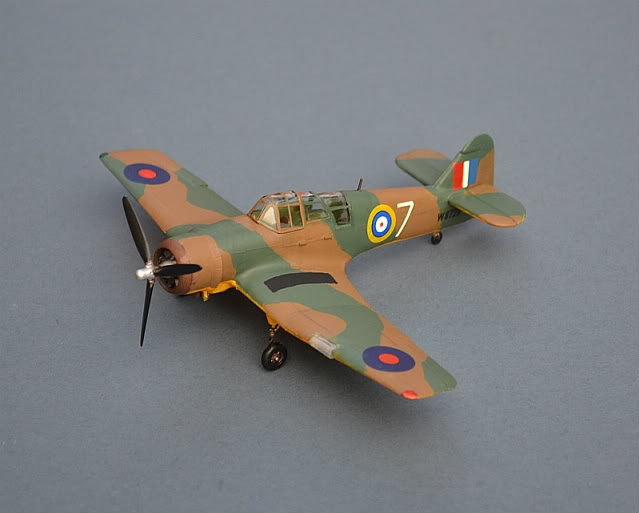
Originally powered by an in-line Rolls Royce Kestrel engine, later variants were powered by the Bristol Mercury and P&W Twin Wasp Junior engines.
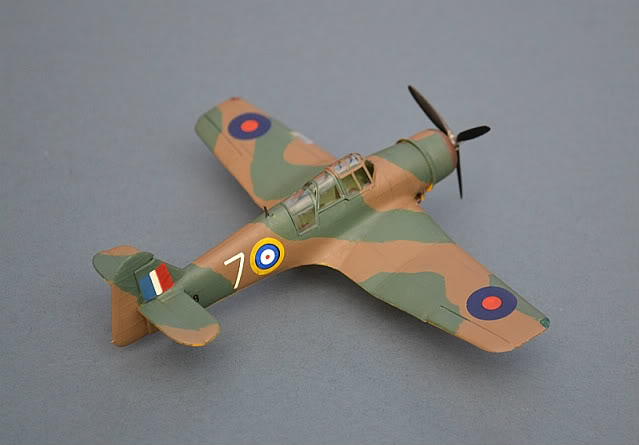
The ancient FROG kit of the Master remains available from various Eastern European sources. Although lacking in details (for example in its entirely bare cockpit), in its original FROG issue it is a nicely engineered kit and a worthy representation of this key WW2 Trainer.
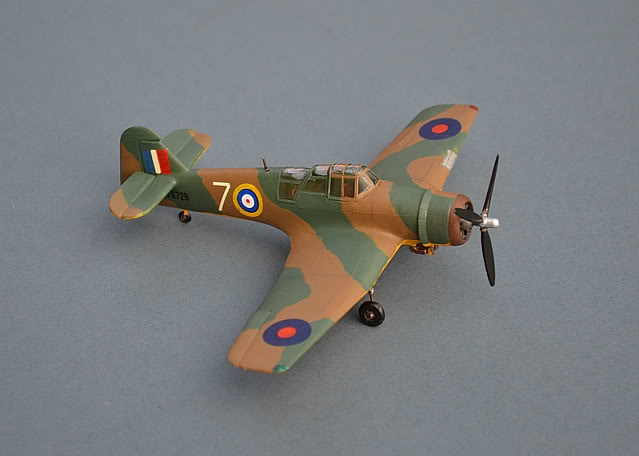
This one came as a dirty bag of bits from a rummage box at a model show and judging by the instruction sheet it is a genuinely old Frog kit. Decals still worked, but I replaced the rather misaligned fuselage roundels with a spare set. However, the rather mis-proportioned fin marking with its thin white part seems to be correct, judging by several photos on the net.
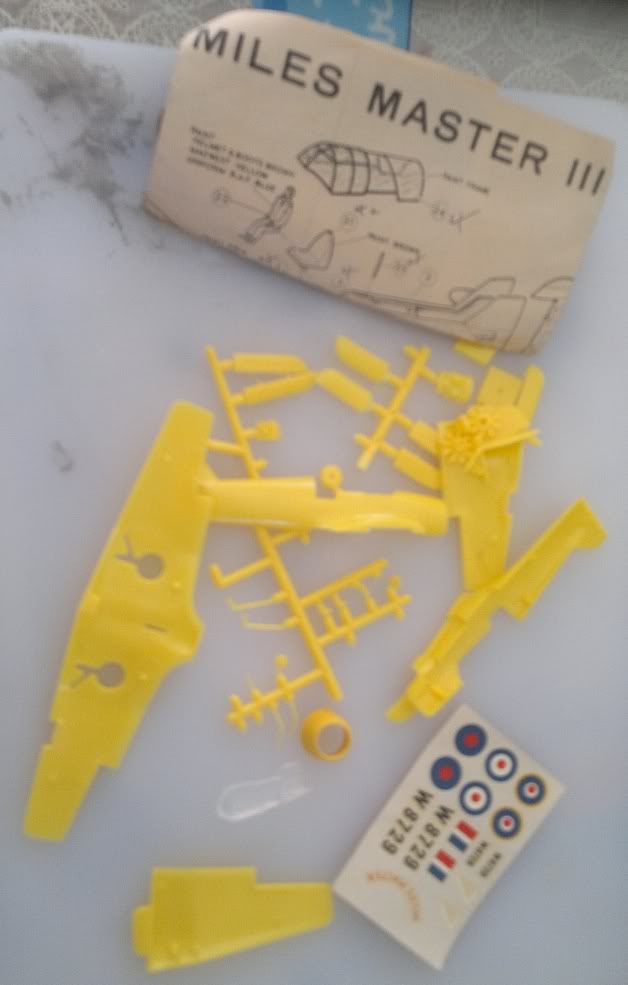
FROG first released this kit in 1963, and last released it in 1969, making these decals at least 42 years old and probably (given the instructions) 48 years old! FROG's 1963 catalogue was one of its most prolific and exciting (18 new kits compared with 2 the previous year, and a completely new box design), marking a very obvious step in accuracy and quality over the toy-like plastic kits that they had previously produced.
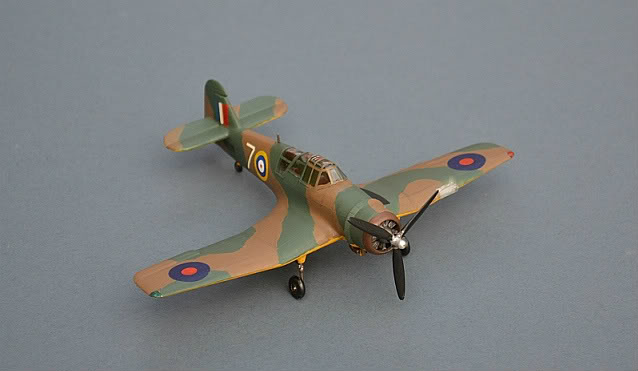
More RAF Aircraft on my Friends & Allies pages
Background image - the Red Arrows, in tribute to Flt Lt John Egging RAF
© 2011 www.gengriz.co.uk